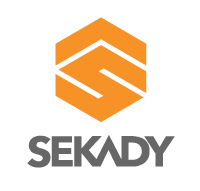Automating construction loan draws involves connecting your loan management system with project tracking software so data flows automatically without manual entry. Key steps include system integration, configuring draw schedules and milestones, automating notifications, and streamlining approval workflows so nothing gets stuck in manual handoff points.
Automating Construction Loan Draws: Your Complete Implementation Guide
Manual draw management is killing your productivity. If your construction lending team is managing draws through email, spreadsheets, and phone calls, you're leaving money on the table—literally hours of lost productivity every single day.
Automating construction draws isn't optional anymore. It's the difference between scaling your business and staying stuck. Let's break down exactly how to do it.
Why Automation Matters in Construction Draws
Before we talk about how to automate, let's be clear about why it matters.
Manual draw management means:
- Contractors email draw requests
- Someone manually enters the information into a spreadsheet
- Someone else emails the inspector to schedule
- The inspector sends their report via email
- Someone manually compares the inspector report to the draw request
- Someone creates an approval document
- Someone initiates the payment manually
- Someone updates the loan ledger
That's 8 different manual touchpoints. At each one, there's potential for error, delay, or miscommunication. If each touchpoint adds 30 minutes, you've just added 4 hours to the draw cycle. Multiply that across 20 projects, and you're looking at 80 hours of labor that could be eliminated through automation.
Automation eliminates those touchpoints. Data flows from one system to the next automatically. No manual data entry. No email handoffs. No delays waiting for someone to do their part.
Step 1: Choose Software Built for Construction Draw Automation
The foundation of any automation strategy is choosing the right platform. You need software specifically designed for construction lending that integrates with the tools your contractors already use.
What to look for:
- Ecosystem integration - Does it connect to Procore, Touchplan, or other project management platforms your contractors use?
- Real-time data sync - Does data flow automatically, or does someone need to manually import information?
- Mobile-first design - Can inspectors complete their work from the field, or do they have to wait until they're back at the office?
- Customization - Can you configure the software for your specific loan structure and approval process?
- Scalability - Can the platform handle 10 projects today and 100 projects in two years?
Sekady was built from scratch specifically for construction lending automation. It connects to your existing tools, enables real-time data sync, and scales with your business.
Step 2: Integrate Your Systems (The Data Foundation)
Automation starts with data integration. If your loan management system, your inspectors' mobile app, and your contractors' project management tools don't talk to each other, you'll still be manually moving data between systems.
The key integrations you need:
| Integration | Benefit | Impact |
|---|---|---|
| Project Management → Loan Software | Construction progress data automatically syncs to the loan platform | Eliminates manual updates; real-time project status visibility |
| Loan Software → Accounting | Approved draws automatically post to your general ledger | No manual journal entries; immediate financial accuracy |
| Inspection App → Loan Software | Inspector reports sync directly from the field | Eliminates email delays; immediate data availability |
| Loan Software → Payment Processing | Approved draws automatically trigger ACH/wire transfers | Faster payment; fewer manual payment processing steps |
| Document Storage → Loan Software | Lien waivers, invoices, and permits are automatically organized | Single source of truth; never lose a document |
Once these integrations are in place, data flows continuously. When a contractor updates project progress in Procore, that data automatically appears in your loan management system. When an inspector completes a report on their mobile device, it automatically creates a record in the loan system. When you approve a draw, the payment system automatically initiates the transfer.
Step 3: Configure Your Draw Schedules and Milestones (The Blueprint)
Before automation can work, you need clear, specific rules about when draws are released. This is where your draw schedule and milestone definitions come in.
Step 3a: Create a detailed draw schedule
Your draw schedule should specify:
- How many draws the project will have (typically 4-6 for residential, 10-20 for larger projects)
- What percentage of the total budget each draw represents
- Exactly what triggers each draw (not "framing is done" but "all framing studs installed and inspected per building code section X.Y")
- Required documentation for each draw
- Who approves each draw (you, a credit committee, etc.)
Step 3b: Define milestone completion criteria
Be specific. "Framing 100% complete" isn't specific enough. Say:
- "All load-bearing walls are fully framed and braced"
- "All joists are installed and secured per plan"
- "Windows and exterior doors are set and rough-in inspected"
When milestones are clearly defined, inspectors know exactly what to look for. Contractors know exactly what needs to be done. There's no ambiguity, which means fewer disputes.
Step 3c: Document required submissions
For each draw, specify exactly what documents are required:
- Contractor's invoice itemizing work completed
- Lien waivers from all subs who worked on this phase
- Completion photos showing the work from multiple angles
- Updated project schedule
- Any permits or inspections that were completed
When contractors know exactly what's needed, they submit complete packages. When you know exactly what you're supposed to receive, you can reject incomplete submissions immediately rather than discovering the problem later.
Step 4: Automate Your Notification and Assignment Workflow
This is where the real magic happens. Instead of someone manually scheduling inspections and sending email reminders, your system does it automatically.
How the automated workflow works:
Trigger 1: Contractor Submits Draw Request Contractor logs into Sekady and submits the draw request with documentation. The system automatically:
- Validates that all required documents are included
- Checks that the requested amount doesn't exceed the approved budget for that line item
- Checks that all lien waivers from the previous draw are on file
- Creates a timestamped record of the submission
Trigger 2: System Notifies Inspector The system automatically:
- Identifies which inspectors are qualified for this project type and location
- Selects an available inspector based on availability and geography
- Sends an automated notification with all relevant project information
- Creates a mobile-friendly inspection checklist based on your milestone definitions
- Provides the inspector with the contractor's photos and claims so they can compare with reality
Trigger 3: Inspector Completes Verification The inspector:
- Uses a mobile app to visit the site
- Compares actual work against the contractor's claims
- Takes their own geotagged photos
- Records the percentage of work actually complete (which may differ from the contractor's claim)
- Submits the inspection report electronically
Trigger 4: System Compares and Flags Discrepancies The system automatically:
- Compares the contractor's claimed percentage of completion with the inspector's verified percentage
- Flags material discrepancies (e.g., contractor claimed 100% complete, inspector verified only 75%)
- Creates an alert for the lender if anything doesn't match
- Routes the draw to the appropriate person for review
Trigger 5: Conditional Approval Routing The system automatically:
- Routes routine draws (no discrepancies, all documents complete) to a single approval person
- Routes complex draws or draws with discrepancies to a credit review committee
- Routes high-dollar draws to a senior review
- Tracks how long each draw has been in the approval queue and escalates if it exceeds time limits
This entire workflow happens without anyone manually coordinating steps. The contractor submits once, and the system orchestrates everything else.
Step 5: Streamline Your Approval Workflows (The Decision Point)
Even with automation, approvals still require human judgment. But you can streamline the approval process so that human judgment is applied only where it's needed.
Design your approval rules:
| Draw Scenario | Approval Route | Time to Approve |
|---|---|---|
| Routine draw: all docs complete, inspection confirms claimed %, on budget | Single approver signature | 1 business day |
| Minor discrepancy: inspector verified 90% vs. contractor claimed 95%, all docs complete | Require brief explanation; single approver | 1-2 business days |
| Material discrepancy: inspector verified 70% vs. contractor claimed 100% | Credit review committee; may require contractor explanation | 3-5 business days |
| Over-budget draw: requested amount exceeds line item budget | Requires change order; can't approve until change order is processed | Variable |
| Missing docs: lien waiver from key sub not yet received | Draw holds until missing docs are provided | Variable |
By routing draws based on risk, you ensure that your best people are spending time on complex decisions, not rubber-stamping routine approvals. Routine draws move through in one day. Complex draws get the attention they deserve.
Step 6: Automate Fund Disbursement (The Payment)
Once a draw is approved, it should disburse automatically—not sit around waiting for someone to process the payment.
How automated disbursement works:
Step 1: Approval Complete Draw reaches final approval status in the system.
Step 2: Payment Method Selected The system checks the contractor's payment preference (ACH, wire, check) and the draw amount determines the payment method if you have rules (e.g., all draws under $50K are ACH, over $50K require wire).
Step 3: Payment Initiated The system automatically:
- Prepares the payment file
- Initiates ACH transfer or wire transfer through your banking system
- Generates a check if that's the payment method
- Records the payment in your accounting system
- Sends a notification to the contractor that payment has been initiated
Step 4: Real-Time Ledger Update The system automatically:
- Updates the loan's remaining balance
- Records the disbursement in the financial ledger
- Updates the remaining budget for each line item
- Recalculates interest reserve if applicable
- Updates the borrower's dashboard showing current funding status
Step 5: Confirmation to All Parties Automated notifications are sent to:
- Contractor (payment has been sent, expected arrival date)
- Lender (draw has been funded, remaining balance is X)
- Accounting (draw has been recorded and posted to ledger)
The entire process, from approval to payment to accounting record, happens in minutes. No one is manually processing the payment. No one is manually updating the ledger.
Step 7: Enable Real-Time Tracking and Reporting
With automation in place, you should have complete visibility into every draw at every stage.
Dashboard Visibility You Should Have:
- Portfolio Overview - All active projects, total committed capital, total drawn to date, total remaining
- Project View - For each project, all approved draws, pending draws, upcoming draws based on timeline
- Draw Status - Every draw shows its current stage (submitted, inspected, approved, funded, paid)
- Budget Tracking - For each project, see budget vs. actual costs, which line items are fully funded, which have remaining budget
- Timeline Analysis - See which draws are on track to the planned schedule and which are delayed
- Risk Alerts - Automatic flagging of draws that are delayed, over-budget, missing documentation, or otherwise problematic
This visibility lets you see problems immediately. If a draw is stuck in approval for too long, you know it. If a project is trending over-budget, you know it. If an inspection is delayed, you know it.
The Complete Automation Architecture
Here's how all these pieces fit together:
Contractor → Draw Request (with docs)
↓
System validates & checks budget
↓
System automatically schedules inspection
↓
Inspector visits, submits report (mobile)
↓
System compares contractor claim vs. inspection
↓
System routes for approval (based on rules)
↓
Approval complete
↓
System initiates payment automatically
↓
System updates ledger automatically
↓
Notifications sent to all partiesThe entire process happens without manual intervention at most stages. Where human judgment is needed (approval), the system provides all the information needed to make a quick decision.
Common Automation Challenges and Solutions
Challenge 1: Data Quality If your contractors aren't consistently submitting complete information, automation won't work well.
Solution: Implement mandatory field validation. Don't allow draw request submissions until all required fields are completed. Use Sekady's submission checklist to make it clear what's required before they submit.
Challenge 2: Legacy Integrations Your existing systems might not have modern APIs that allow easy integration.
Solution: Some platforms like Sekady can work with older systems through manual imports or custom integrations. Ask your vendor about options for connecting to your specific tools.
Challenge 3: Change in Process Your team has been doing things a certain way for years. They resist the new automated process.
Solution: Start with a pilot on one or two projects. Show your team how much time automation saves. Make the switch gradually, supporting your team through the transition. Training and change management are critical.
Challenge 4: Customization Complexity Every lender has slightly different requirements. Your approval process might be more complex than the default.
Solution: Choose platforms that allow robust customization. Sekady, for example, lets you configure approval workflows, draw schedules, and notifications to match your specific process.
Implementation Roadmap: Getting to Automated Draws
Phase 1: Foundation (Weeks 1-4)
- Select your automation platform
- Integrate with your project management and accounting systems
- Migrate historical project data
- Configure your standard draw schedules and milestones
Phase 2: Pilot (Weeks 5-8)
- Launch with 2-3 new projects
- Train contractors on the submission process
- Train your team on the approval workflow
- Work out any configuration issues
- Gather feedback
Phase 3: Refinement (Weeks 9-12)
- Adjust workflows based on pilot feedback
- Create training materials for contractors
- Document your process
- Prepare for broader rollout
Phase 4: Scaling (Weeks 13+)
- Roll out to all new projects
- Gradually migrate existing projects if feasible
- Monitor for issues and optimize continuously
- Train new staff on the automated process
The ROI of Automating Construction Draws
Let's put some numbers on this.
Scenario: Construction lending operation with 30 active projects
Before Automation:
- Average draw takes 12 business days from submission to funding
- Each draw requires 3-4 hours of staff time (data entry, coordination, tracking)
- Assume 5 draws per project per year = 150 draws annually
- 150 draws × 3.5 hours = 525 hours annually
- At $50/hour average cost = $26,250 annually in labor
After Automation:
- Average draw takes 3 business days from submission to funding (4x faster)
- Each draw requires 0.5 hours of staff time (mainly just approval decision)
- 150 draws × 0.5 hours = 75 hours annually
- 75 hours × $50/hour = $3,750 annually in labor
- Savings: $22,500 annually, plus faster funding = better borrower relationships
For a $1 million in annual draw volume, that's a $22,500 efficiency gain. For larger operations, the savings multiply dramatically.
Plus, there's the reduction in errors. If automation prevents even one over-funding incident per year (which could cost thousands), the ROI is obvious.
Best Practices for Draw Automation Implementation
1. Start with process clarity Before automating, document your current process. What steps happen in what order? Where are the delays? What decisions need to be made? What rules apply? Map it all out. Then automate the mapped process.
2. Build in flexibility Not every project is identical. Your automation should allow for some variation. Sekady handles this by allowing different draw schedules for different project types while maintaining consistent workflows.
3. Make data entry easy for contractors The easier you make it for contractors to submit draw requests, the faster they'll submit them. Use mobile-friendly forms, prepopulated information where possible, and clear instructions.
4. Ensure real-time visibility Make sure your team can see the status of every draw at any time. Don't rely on email updates or status meetings. Real-time dashboards show what's happening right now.
5. Plan for inspections Inspections are often the bottleneck. Ensure your platform can schedule inspectors efficiently, route inspections to available inspectors automatically, and prioritize urgent inspections.
6. Audit and optimize continuously Once you're automated, measure the metrics. How long does each draw take on average? Where are the remaining delays? What's causing approvals to take longer than expected? Use data to continuously optimize.
Conclusion: Automation is the Future of Construction Lending
Manual draw management was acceptable 10 years ago. Today, it's a competitive disadvantage. Lenders who automate draws can scale their business, serve more projects, reduce errors, and deliver faster funding. Contractors appreciate faster draws—it improves their cash flow and project execution.
Automation doesn't mean removing human judgment. It means removing manual busywork so your team can focus on the decisions that matter: approving draws, managing risk, and building relationships.
Ready to automate your construction draws? Learn more about how Sekady streamlines the entire process by visiting our FAQ page or schedule a demo to see automation in action.




